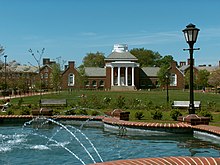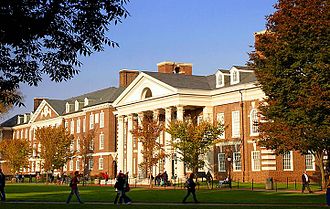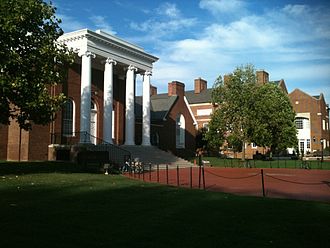
Newark, DE 19716, Top 100 Universities in USA 2014, Rank – 93, University of Delaware In Delaware
Newark, DE 19716, Top 100 Universities in USA 2014 – Rank – 93, University of Delaware In Delaware
University of Delaware
Newark, DE 19716 , USA
The University of Delaware (colloquially “UD“) is the largest university in Delaware. The main campus is in Newark, with satellite campuses in Dover, Wilmington, Lewes, and Georgetown. It is medium-sized – approximately 16,000 undergraduate and 3,500graduate students. Although UD receives public funding for being aland-grant, sea-grant, space-grant and urban-grant state-supported research institution, it is also privately chartered.[3][4] As of 2012, the school’s endowment is valued at about US$ 1.09 billion.[1]Delaware has been labeled one of the “Public Ivies,” a publicly funded university considered as providing a quality of education comparable to those of the Ivy League.[5]
UD is classified as a research university with very high research activity by the Carnegie Classification of Institutions of Higher Education.[6] The university’s programs in engineering, science, business, hospitality management, education, urban affairs and public policy, public administration, agriculture, history, chemical and biomolecular engineering, chemistry and biochemistry have been highly ranked with some drawing from the historically strong presence of the nation’s chemical and pharmaceutical industries in the state of Delaware, such as DuPont and W. L. Gore and Associates. It is one of only four schools in North America with a major in art conservation. UD was the first American university to begin a study abroad program.[7]
The school from which the university grew was founded in 1743, making it one of the oldest in the nation. However, UD was not chartered as an institution of higher learning until 1833. Its original class of ten students included George Read, Thomas McKean, andJames Smith, all three of whom would go on to sign the Declaration of Independence.
Organization and rankings

The south green with Memorial Hallin the background and Magnolia Circle in the foreground.
| University rankings | |
|---|---|
| National | |
| ARWU[13] | 70 |
| Forbes[14] | 126 |
| U.S. News & World Report[15] | 75 |
| Washington Monthly[16] | 148 |
| Global | |
| ARWU[17] | 101-150 |
| QS[18] | 401 |
| Times[19] | 159 |
The university is organized into seven colleges:
- College of Agriculture and Natural Resources
- College of Arts and Sciences
- Alfred Lerner College of Business and Economics
- College of Earth, Ocean and Environment
- College of Education and Human Development
- College of Engineering
- College of Health Sciences
There are also three schools:
- School of Education (part of the College of Education & Human Development)
- School of Marine Science and Policy (part of the College of Earth, Ocean & Environment)
- School of Public Policy and Administration (part of the College of Arts & Sciences)
Accelerated Programs also allow students to earn both bachelor’s and master’s degrees within a five-year period. Opportunities in the College of Human Services, Education and Public Policy exist to acquire a bachelor’s in leadership and a master’s in public administration. Students may also pursue a bachelor’s degree in hotel management and a master’s in business administration through a “4+1+1” program where students work for one year between the undergraduate and graduate experiences. Students in the College of Engineering can pursue a bachelor’s degree in one of the University’s engineering disciplines and a master’s in business administration.
The Medical Scholars Program is an opportunity for students who wish to pursue careers in the medical profession. Successful participation in the Medical Scholars Program leads to a Bachelor of Arts in Liberal Studies from the University of Delaware and the M.D. degree from Jefferson Medical College in Philadelphia.
The Ronald McNair Post-Baccalaureate Achievement Program is an initiative to prepare low-income, first generation college students and underrepresented students of African American, Latino, and Native American descent for doctoral study. Since its inception at Delaware, the program boasts a 100% placement rate of its scholars in graduate programs across the country.



